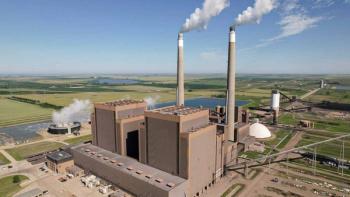
Natural gas to replace coal-fired power generation
Projections for natural gas generation growth are based mainly on the expectation of coal-fired power plant retirements, says a report titled, 'Gas and Electric Infrastructure Interdependency Analysis,' by the Midwest Independent Transmission System Operator (MISO). Taking advantage of the surplus of natural gas supply, LNG export facilities such as the nine U.S. export projects in operation or underway, offer the potential for a new baseload export market for natural gas. Canadian developers also have proposed several new export projects, the report says.
US natural gas generation capacity is expected to almost double by the year 2015 compared to 2009 (The image has been sourced from the MISO report, 'Gas and Electric Infrastructure Interpendency Analysis')
Coal-fired electric generation is likely to continue to be under pressure from increasingly stringent environmental regulations, according to the report. The FERC recently issued an informal report stating that up to 81 gigawatts of coal- and oil-fired electric generation is "likely" or "very likely" to be retired due to new environmental restrictions, including the EPA’s recently issued maximum including the EPA’s recently issued maximum achievable control technology (“MACT”) requirement within the proposed Cross-State Air Pollution Rule (“CSAPR”).
Natural gas consumption for power generation is expected to exceed industrial demand in future, presumably beyond 2030, with increase in industrial energy conservation and demand-side management. The EIA projects natural gas power generation to almost double by 2015, and natural gas, wind and other renewables to account for the majority of capacity additions from 2009 to 2035.
Stringent national standard on emissions
CSAPR will institute a stringent national standard on emissions of mercury, arsenic, and other pollutants found in coal and oil, but not in natural gas. While the very large 81 gigawatt estimate is highly fluid and based on assumptions subject to review, it indicates the direction for gas, says the report.
Actions by the EPA as directed by the Presidential memo of December 23, 2011 confirm further regulatory action against coal-fired power generation. The strict MACT rule represents an “upgrade or die” obligation for operators of older coal-fired plants, requiring them to limit their emissions of various air pollutants, including mercury, by January 2015, with some flexibility for one- to two-year extensions.
Compulsory upgrades of older plants
Several major utilities have announced or are actively executing programs to retire coal-fired facilities, the MISO report says. Tennessee Valley Authority signed a settlement with the EPA to idle or retire 2,700 MW of its 17,000 MW of coal fired capacity by 2017. Southern Company announced that it would expect to retire 4,000 MW of its 12,000 MW coal-fired fleet, and about 3,200 MW worth of coaland oil-fired plants would be converted to run on gas and another 1,500 MW would be replaced with new gas plants.
About 40 percent of Southern's coal fleet would soon be retired or replaced with gas and the expenditure could reach $13 billion to $18 billion through 2020 upgrading its coal-fired plants in response to the new EPA rules. American Electric Power states that it will retire almost 6,000 MW of coal-fired generation and has listed 25 of 55 coal-fired generators as candidates for being shuttered, many of which have been running at full capacity in 2011. On that list is a 42-year-old behemoth in Louisa, Ky., called Big Sandy 2. Upgrading it would cost $700 million.
Up to 80,000 MW of coal-fired capacity could be supplanted by other fuels or conservation in the U.S. as a result of the new EPA rules. This is consistent with the FERC Staff number of 81 gigawatts, and represents about seven percent of the U.S.’s electric generating capacity. The EPA’s estimate is much lower at 10,000 MW. "However, the trend toward large-scale coal reductions is clear, and that natural gas is the leading replacement fuel choice for power generation. If the U.S. and Canadian natural gas market increases, about three-fourths of the market growth will occur in the power sector," the report says.
The report, 'Gas and Electric Infrastructure Intredependency Analysis' prepared by Gregory L. Peters, Principal Consultant, dba EnVision Energy Solutions for the benefit of the Midwest Independent Transmission System Operator (“MISO”) can be read
Newsletter
Power your knowledge with the latest in turbine technology, engineering advances, and energy solutions—subscribe to Turbomachinery International today.




